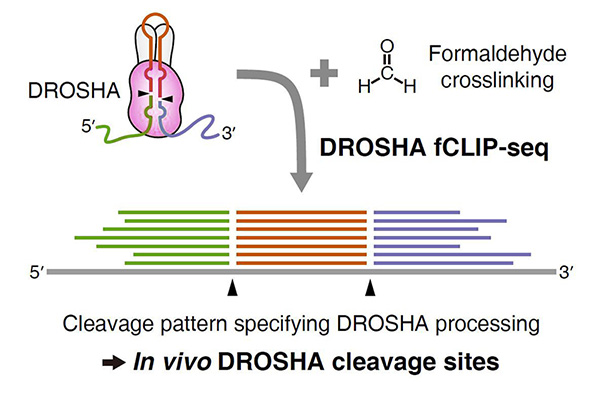주메뉴
- About IBS 연구원소개
-
Research Centers
연구단소개
- Research Outcomes
- Mathematics
- Physics
- Center for Theoretical Physics of the Universe(Particle Theory and Cosmology Group)
- Center for Theoretical Physics of the Universe(Cosmology, Gravity and Astroparticle Physics Group)
- Center for Exotic Nuclear Studies
- Center for Artificial Low Dimensional Electronic Systems
- Center for Underground Physics
- Center for Axion and Precision Physics Research
- Center for Theoretical Physics of Complex Systems
- Center for Quantum Nanoscience
- Center for Van der Waals Quantum Solids
- Chemistry
- Life Sciences
- Earth Science
- Interdisciplinary
- Institutes
- Korea Virus Research Institute
- News Center 뉴스 센터
- Career 인재초빙
- Living in Korea IBS School-UST
- IBS School 윤리경영


주메뉴
- About IBS
-
Research Centers
- Research Outcomes
- Mathematics
- Physics
- Center for Theoretical Physics of the Universe(Particle Theory and Cosmology Group)
- Center for Theoretical Physics of the Universe(Cosmology, Gravity and Astroparticle Physics Group)
- Center for Exotic Nuclear Studies
- Center for Artificial Low Dimensional Electronic Systems
- Center for Underground Physics
- Center for Axion and Precision Physics Research
- Center for Theoretical Physics of Complex Systems
- Center for Quantum Nanoscience
- Center for Van der Waals Quantum Solids
- Chemistry
- Life Sciences
- Earth Science
- Interdisciplinary
- Institutes
- Korea Virus Research Institute
- News Center
- Career
- Living in Korea
- IBS School
News Center
| Title | Mapping DROSHA's Cleavage Sites | ||
|---|---|---|---|
| Embargo date | 2017-04-21 01:00 | Hits | 1808 |
| Research Center |
Center for RNA Research |
||
| Press release | |||
| att. | |||
Mapping DROSHA's Cleavage Sites- IBS scientists develop a new method to understand what and where the DROSHA protein is cutting - Each cell of our body is the result of an orchestra of sophisticated mechanisms that control which genes are and are not expressed at any given time. Partly, this is possible thanks to the coordination of several types of RNA molecules, like microRNAs (miRNAs). Researchers at the Center for RNA Research, within the Institute for Basic Science (IBS), developed a new technique called fCLIP-seq that analyzes the miRNA fragments created by the RNA-cleaving protein DROSHA. Several processes are regulated by DROSHA, such as neuronal development, bone marrow formation, and inhibition of RNA-viruses. Therefore, it is expected that this study will open up new pathways to understand the role of DROSHA in such important biological phenomena. The full description of the findings is available in Molecular Cell. A vital and ancient component of gene regulation, miRNA tunes the expression of as many as 30-60% of mammalian protein-encoding genes, usually silencing them. Over 2,000 miRNAs are present in human cells, playing various crucial roles in development, cell differentiation, cell division, cell death, and cancer development. Mature miRNAs are short RNA molecules, approximately 22 nucleotides in length, derived from a multi-step process that begins with longer RNA fragments called primary miRNAs (pri-miRNAs). DROSHA function is to cut these pri-miRNAs into shorter pieces. This study is the first genomic scale analysis of DROSHA cleavage sites on pri-miRNA. "fCLIP-seq stands for formaldehyde crosslinking, immunoprecipitation, and sequencing. By treating the cells with formaldehyde, we manage to preserve the bond between DROSHA and its RNA binders, so that we can study what DROSHA is binding to and where it is cleaving," explains KIM Baekgyu, first author of the study. "This result not only serves as a good database for miRNA research, but also deepens our understanding of miRNA generation."
The research team identified hundreds of DROSHA cleavage sites on pri-miRNAs, including new information not found even in the world's largest miRNA database, miRBase. Interestingly, IBS biologists uncovered additional miRNA end modifications after DROSHA processing, which are expected to be important for the regulation of miRNA biogenesis, whose dysregulation is often associated with diseases, in particular with cancer. Furthermore, they found multiple alternative DROSHA cleavage patterns that produce different miRNA products starting from the same pri-miRNA precursors. Reported only in a very small number of miRNAs, IBS scientists found that this actually occurs in several cases. The research team also discovered that DROSHA cuts dozens of non-pri-miRNA targets, suggesting new possible functions of DROSHA that would be interesting to explore further.
Letizia Diamante Notes for editors - References - Media Contact - About the Institute for Basic Science (IBS) |
|||
|
|
|||
| Next | |
|---|---|
| before |
- Content Manager
- Communications Team : Kwon Ye Seul 042-878-8237
- Last Update 2023-11-28 14:20













